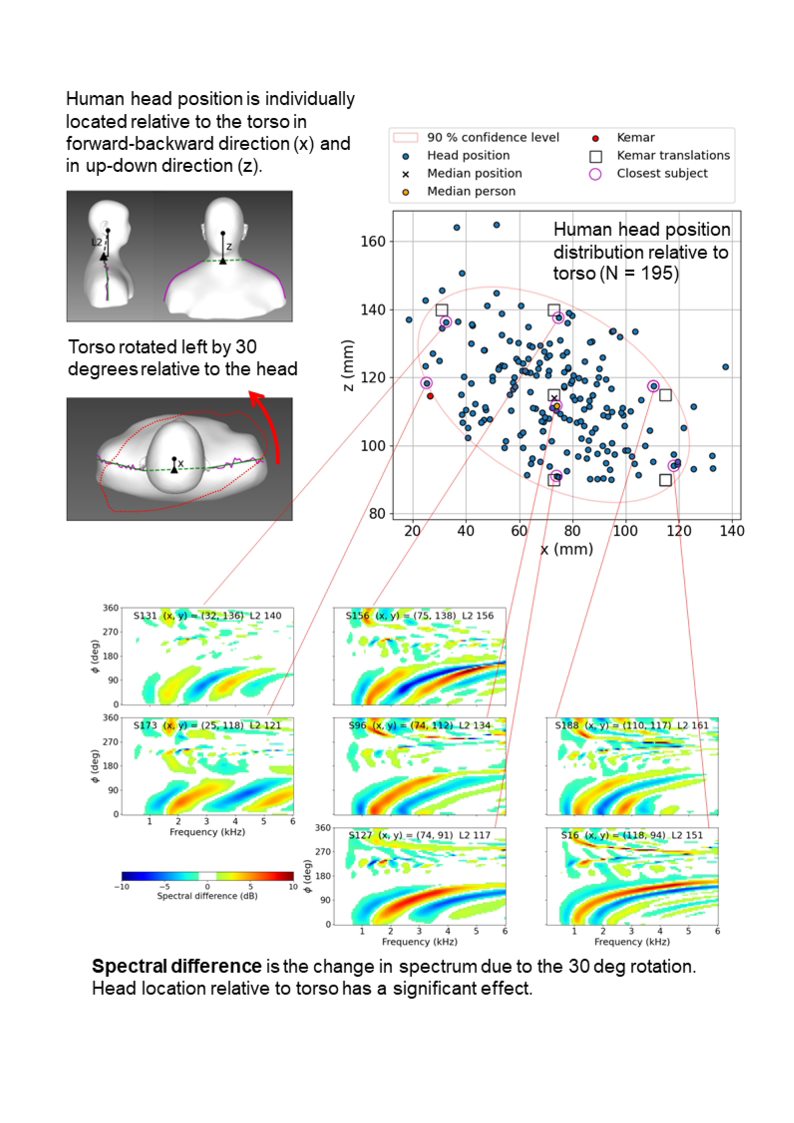Home / Publications / E-library page
You are currently logged in as an
Institutional Subscriber.
If you would like to logout,
please click on the button below.
Home / Publications / E-library page
Only AES members and Institutional Journal Subscribers can download
The significance of representing realistic torso orientation relative to the head in the head-related transfer function (HRTF) is studied in this work. Actual head position relative to the torso is found for 195 persons. The effect of the head position in HRTF is studied by modifying the 3D model of a Kemar head-and-torso simulator geometry by translating the head relative to torso in up-down and forward-backward directions and rotating the torso. The spectral difference is compared to that seen in the closest matching actual persons. Forward-backward location of the head has the strongest influence in theHRTF. The spectral difference between the fixed and rotated torso spectra can exceed a 1-dB limit for all sound arrival azimuth directions when the torso rotation exceeds 10◦. The spectral difference decreases with increasing source elevation. A subjective listening test with personal HRTF demonstrates that the spectral effect of the torso rotation are audible as a sound color and location changes. The HRTF data in this work is found by calculating the sound field using the boundary element method and the 3D shape of the person acquired using photogrammetry.
Author (s): Johansson, Jaan; Mäkivirta, Aki; Malinen, Matti
Affiliation:
Kuava Oy; Genelec Oy, Iisalmi, Finland
(See document for exact affiliation information.)
Publication Date:
2024-07-09
Import into BibTeX
Permalink: https://aes2.org/publications/elibrary-page/?id=22646
(1041KB)
Click to purchase paper as a non-member or login as an AES member. If your company or school subscribes to the E-Library then switch to the institutional version. If you are not an AES member Join the AES. If you need to check your member status, login to the Member Portal.

Johansson, Jaan; Mäkivirta, Aki; Malinen, Matti; 2024; Effects of Torso Location and Rotation to HRTF [PDF]; Kuava Oy; Genelec Oy, Iisalmi, Finland; Paper ; Available from: https://aes2.org/publications/elibrary-page/?id=22646
Johansson, Jaan; Mäkivirta, Aki; Malinen, Matti; Effects of Torso Location and Rotation to HRTF [PDF]; Kuava Oy; Genelec Oy, Iisalmi, Finland; Paper ; 2024 Available: https://aes2.org/publications/elibrary-page/?id=22646